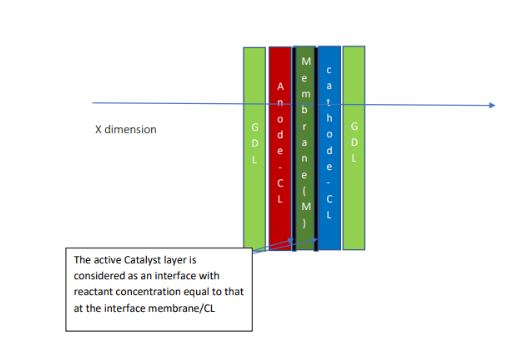| Category | Assignment | Subject | Engineering |
|---|---|---|---|
| University | Newcastle University (NU) | Module Title | CME8131 Electrochemical Energy Conversion and Storage |
| Assignment title: | individual report |
| Count words: | 4000 words |
Each student will produce an individual report of maximum of 4000 words and should include appropriate references and diagrams.
There are some regions in northern Europe (above 54Nº) occupied by a small number of people (1000 persons) which are essentially disconnected from grid supplies of gas and electricity. One way to support their energy needs (heat and electrical power) is to rely on importing bottled gas, for fuel, or petrol/diesel. Such locations often have the potential for large renewable electricity generation (consider wind only due to location) or have excess capacity of renewables. Such renewable energy can be used to provide power and heat for these communities.
Assume average person consumes 5MWh/year of electrical power and 20MWh/year of heat power 90% of which is consumed Nov-Feb. It is suggested that the heating is provided by hydrogen either by burning it in boilers or through its use in combined heat and power system. Assume that one type or multiple types of electrochemical energy storage and conversion are required to balance community variable power use profile and wind generation intermittency (e.g. electrolysis, redox flow batteries, Lithium ion batteries, fuel cells etc).
Your task is to carry out preliminary process design and critical analysis of the power and heat systems for the community. This should include:
Design a process to produce hydrogen from sea water surrounding the community using renewable wind energy.
Choose one or more electrochemical energy conversion and storage technology to provide electrical power energy conversion/storage needs.
Are You Looking for Answer of CME8131 Assignment
Order Non Plagiarized AssignmentA supplier suggested to use direct methanol fuel cell as back up power for some of the critical infrastructure. The system size is 10kW at 70°C and capable of operating for 24hr.
NB. The catalyst layer does not need to be analysed in terms of the spatial current distribution i.e. variation of current density in catalyst layer with the change of methanol concentration (or oxygen) through the thickness of the catalyst layer. Instead treat the catalyst layer as an interface with the membrane. Ignore methanol drag effect.

| D O2 – CL (diffusion coefficient) | 20*10-4 exp[2436[(1/353)−(1/T)]] cm2s-1 |
| D O2 – GDL at T= 343.15 K | 50 *10-3 cm2s-1 |
| D MEOH – CL | 2.8*10-5 exp[2436[(1/353)−(1/T)]] cm2s-1 |
| D MEOH – GDL at T= 343.15 K | 8.7 *10-5 cm2s-1 |
| D MEOH –M | 4.9*10-6 exp[2436 [(1/333)−(1/T)]] cm2s-1 |
| j0 MEOH at 1M | 9.425*10-3 exp[35570/R[(1/353)−(1/T)]] A cm-2 |
| j0 O2 at O2 =1 atm | 4.222*10-3 exp[73200/R[(1/353)−(1/T)]] A cm-2 |
| T operation | 343.15 K |
| α* n (anode) | 0.5 |
| α* n (cathode) | 0.5 |
| δ GDL (thickness) | 0.015 cm |
| δ CL (thickness each anode and cathode) | 0.0023cm |
| δ M (thickness membrane) | 0.018 cm |
| κ membrane (proton conductivity) at 343.15 K and 100%RH | 0.06 S cm-1 |
| Reaction order with respect to O2 | 1 |
| Reaction order with respect to MEOH (in the range 0.5-3 M) | 0.5 |
Get the Solution of CME8131 Assignment. Hire Experts to solve this assignment Before your Deadline
Order Non Plagiarized AssignmentUse available data in literature on efficiency, lifetime, and costing. You should consult with specific economic models available for new proposed technologies, if market data is not widely available. Your recommendation should not be based upon economic considerations alone but should also consider carbon emissions, environmental impact, public perception, safety etc. You should directly compare your recommended approach with alternatives (natural gas, diesel or petrol) to demonstrate the advantages and limitations of your solution.
The following aspects of the report will be evaluated.
| Q | ASPECT | Max Mark Awarded |
|---|---|---|
| 1 | Overall system components list PFD and efficiency | 12 |
| Wind power sizing, location and cost | 5 | |
| Hydrogen system generation and storage design, sizing, cost and choice | 10 | |
| Total for Q1 | 27 | |
| 2 | Technologies selection and justification | 4 |
| technologies size, capacity, cost, location, efficiency etc | 9 | |
| Total for Q2 | 13 | |
| 3 | Anode polarisation model | 12 |
| Cathode polarisation model | 12 | |
| Cell polarisation model | 6 | |
| System sizing (number of cells/area) and fuel/oxidation requirements | 10 | |
| Total for Q3 | 40 | |
| 4 | Costing, economic (CAPEX and OPEX) and sustainability appraisal | 20 |
| Total | 100 | |
Students should be aware of the University regulations with regard to plagiarism. For further clarification students should read section of the MSc handbook and item 46 of the General Regulations.
Buy Answer of CME8131 Assignment & Raise Your Grades
Request to Buy AnswerFacing challenges with your CME8131 Electrochemical Energy Conversion and Storage Assignment? Well! Stop worrying now. You are at the right place. Our platform provides AI-free UK assignment help. We have experienced writers who provide high-quality, no-plagiarism assignments with 100% original content, and here are free assignment samples that you can look over to see the quality of our work. Contact us right now and get high academic grades!
Hire Assignment Helper Today!
Let's Book Your Work with Our Expert and Get High-Quality Content
